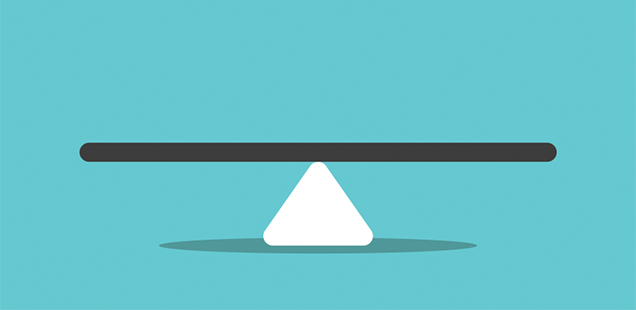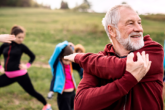
You wobble slightly stepping off a curb, then down you go. In the second or two before you hit the pavement, you wonder what happened to that great sense of balance you used to have.
Balance doesn’t stay steady throughout life. Like muscles and bones, steadiness can deteriorate if not maintained. And balance training just isn’t part of most workouts.
“Balance is something that people never think about,” says Michael Bracko, an exercise physiologist and fitness consultant in Calgary, Canada. That is, until a slip, trip or fall happens. Maintaining balance is easy for most younger people, but as we age our bodies lose muscle mass (about 1% a year starting after middle age) and bone mass. And senses involved with balance start to dull too as we get older: vision as well as senses of touch, temperature, pressure and proprioception (the sense of body placement and how it moves through space).
Certain medications can affect balance too. And the end result can be serious: Falls in older people can result in a broken hip, which, in turn, can trigger a downward spiral into dependance and ill health. Even a fear of falling can keep someone housebound for months.
“Skills such as timing and coordination that are involved in balance are learned and practiced and honed,” says Sabrena Merrill, a personal trainer in Kansas City, Mo., who specializes in balance training. The more we sit, the more those skills erode.
As Bracko puts it: “This is use-it-or-lose-it territory.”
But balance can be shored up, even in very old age. A 2007 study in the journal Osteoporosis International looked at the effect of a yearlong balance training program on women with osteoporosis. By the end of the study, the women’s functional and static balance improved, as did mobility. Falling frequency declined.
Another study in the International Journal of Rehabilitation Research in 2010 found that elderly people enrolled in an eight-week balance or weight training program were less likely to slip and were more likely to recover if they did slip.
Better still if people start working on their balance earlier on, in midlife.
Balance training starts with strengthening all the muscles in the body: “To do the activities of daily living as they relate to balance — walking down the stairs, getting in and out of the bathtub — is really about maintaining muscle strength,” Bracko says. This can be done with an overall weight training program. For those who haven’t been to the gym in a while — or ever — that training should start with the basics and get progressively more difficult so that the muscles are always challenged.
When it comes to balance-specific training, “Your ultimate goal is to be able to maintain your balance in tricky situations,” Merrill says. “If I have a client with poor balance skills, I’ll start off with safe floor exercises, then progress to standing on two feet, then on one leg. If they can do that without assistance, that means they have challenged their systems to the point where they’re sufficient for everyday functional activities.”
Balance training almost always involves targeting core muscles — the ones surrounding the trunk and the back, such as the abdominals, obliques and latissimus dorsi. But it doesn’t end there. “For the balance we need for daily living,” Bracko says, “strength comes from the legs and goes through the core.”
Dallas trainer and Pilates instructor Karon Karter, author of “Balance Training: Stability Workouts for Core Strength and a Sculpted Body,” says runners may have big quads because they’re moving in one direction — forward. But they may have under-developed gluteus medius (muscles on the sides of the hips) and adductor and abductors (inner and outer thigh muscles), which are crucial for balance, springing into action when someone’s treading on unstable surfaces.
People who want to advance their balance training can invest in equipment such as Bosu Balance Trainers, stability balls and wobble boards. Bosus — half-sphere inflatable balls that are wobbly when stood on or sat upon — can be used without any other equipment, or with light weights or other gear for even more demanding workouts. Just doing a simple squat or a lunge on a Bosu offers great balance training.
Even cardio workouts should involve some instability. Elliptical trainers, stationary bikes and other cardio machines may raise the heart rate sufficiently, but they always offer an even, steady surface — and that does precious little for preserving someone’s balance. Taking a class, playing a sport, or walking, running or cycling outside force the body to travel in more planes of movement.
Pilates and yoga can help develop balance as well, Karter says: “In yoga, you’re doing a lot of standing poses, so you have to learn to gauge your core stabilizing muscles — otherwise, you’ll tip over.” Martial arts training, which often involves standing on one leg, also improves stability, as do many boot camp classes.
“You can do something at any age,” Bracko says. “It’s never too late to start.”


